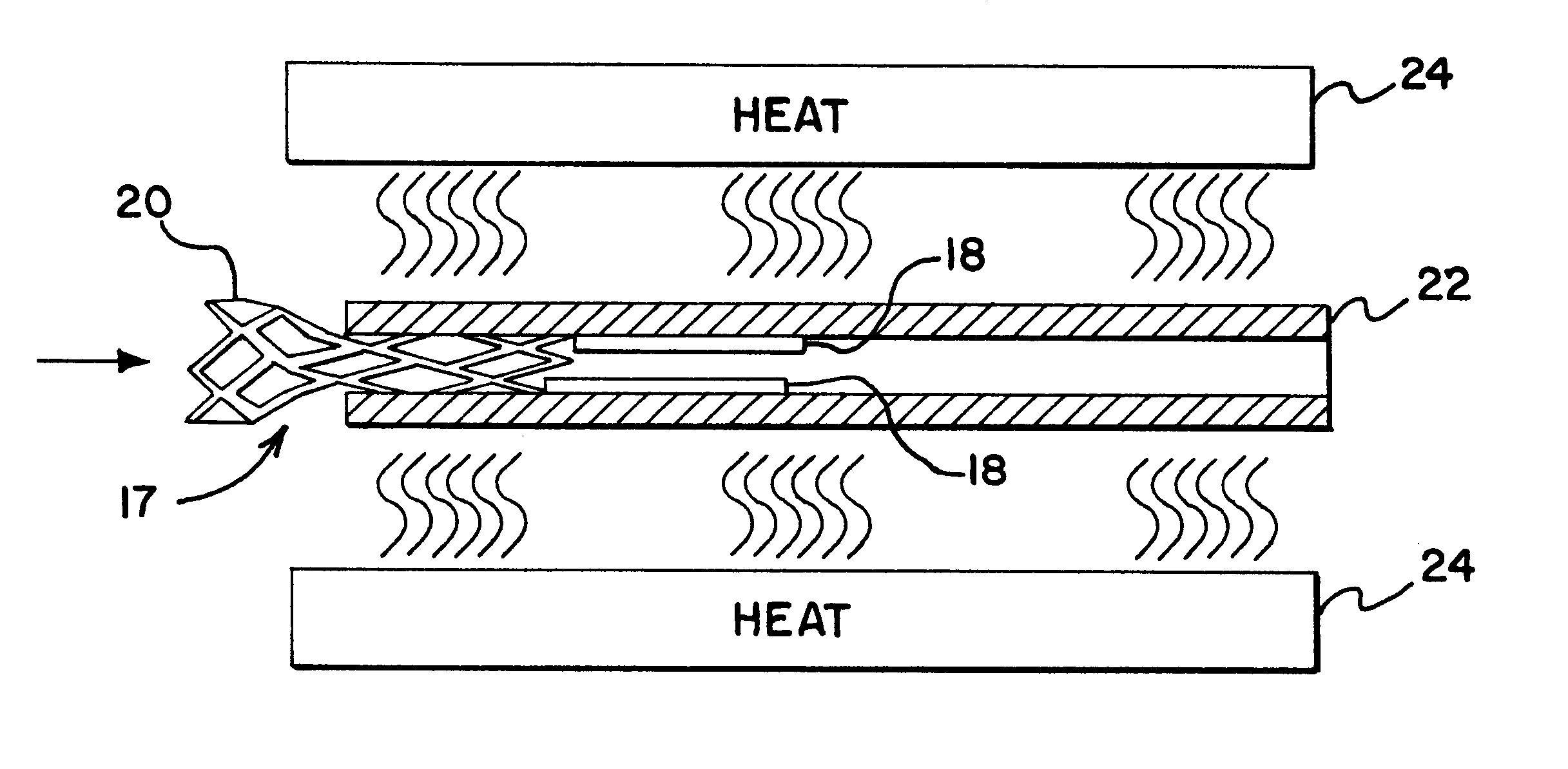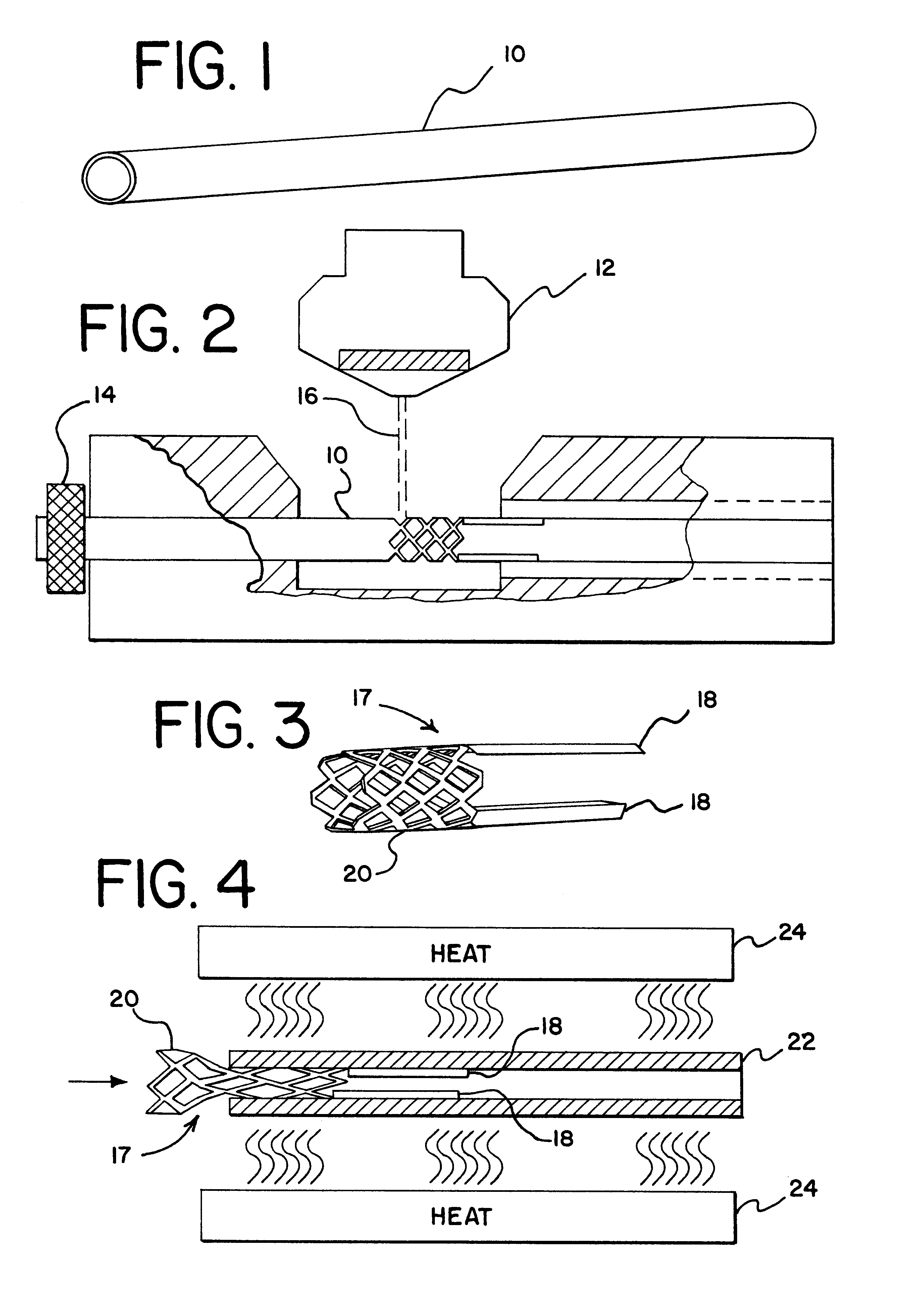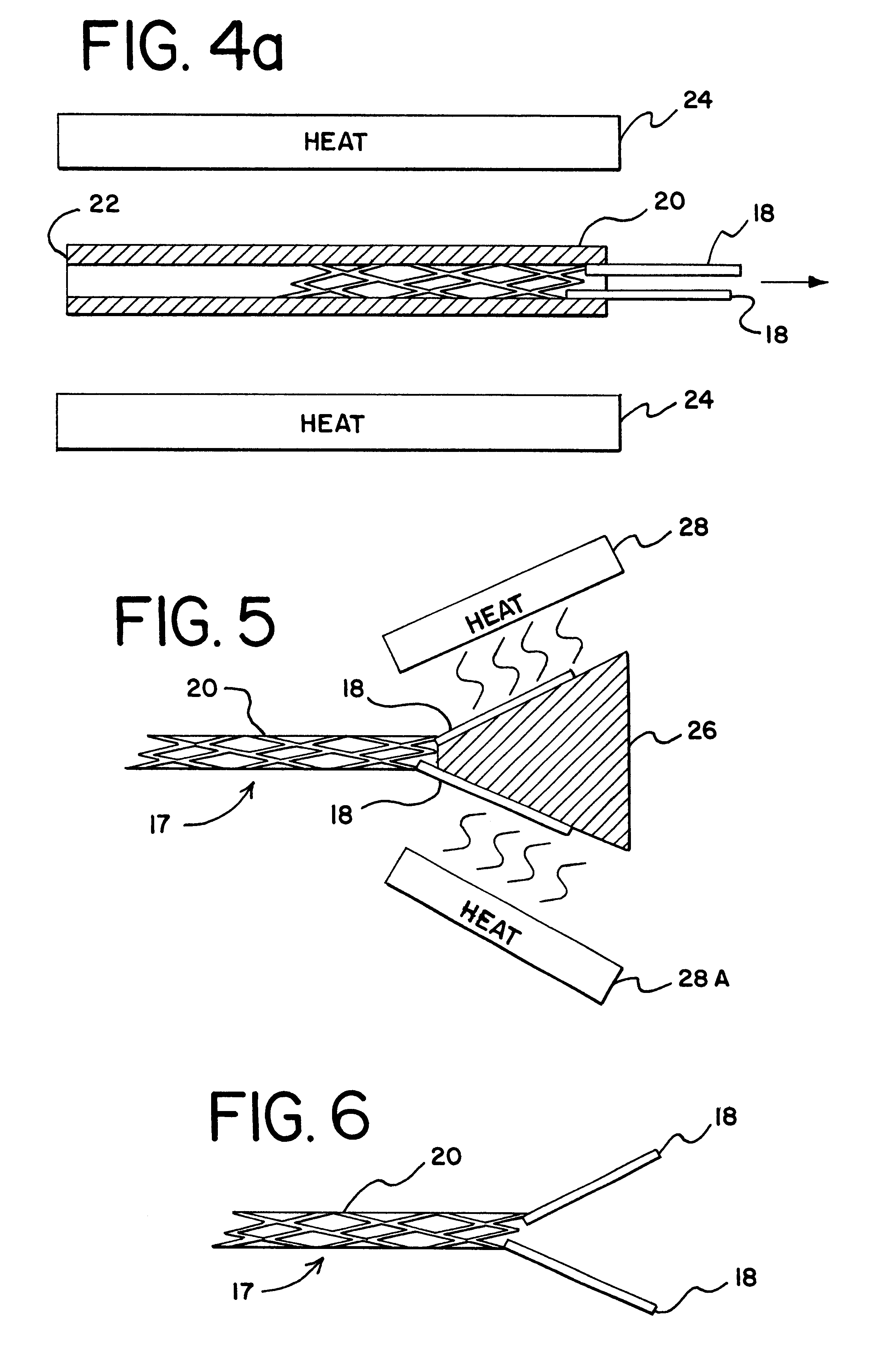Method of manufacturing small profile medical devices
a medical device and small technology, applied in the field of small medical devices manufacturing, can solve the problems of destroying the opposite wall of the tube, affecting the quality of the medical device,
- Summary
- Abstract
- Description
- Claims
- Application Information
AI Technical Summary
Problems solved by technology
Method used
Image
Examples
Embodiment Construction
FIG. 1 illustrates an elongated metallic tube, preferably formed from a nickel-titanium alloy, such as nitinol, which becomes the tubular workpiece for the present method of fabrication. As illustrated in FIG. 2, the elongated tube 10 is placed into a tube holding collet 14 and is positioned under a laser cutting head 12. The laser cutting head 12 generates a downwardly directed laser beam 16 for cutting apertures, or holes, around the circumference of and along the length of the elongated tube 10. Preferably, the apertures take the form of diamond shapes which configuration aids in a subsequent composition step.
FIG. 3 illustrates a workpiece 17, in this case the distal gripping portion of an embolic coil retrieval device which has been cut from the elongated tube 10 and which is produced by the cutting method of FIG. 2. The workpiece 17 takes the form of a skeletal section 20 formed by removing diamond shaped pieces from the elongated tube 10 and a pair of actuator arms 18. It shou...
PUM
| Property | Measurement | Unit |
|---|---|---|
| temperature | aaaaa | aaaaa |
| outer diameter | aaaaa | aaaaa |
| diameter | aaaaa | aaaaa |
Abstract
Description
Claims
Application Information
 Login to View More
Login to View More - R&D
- Intellectual Property
- Life Sciences
- Materials
- Tech Scout
- Unparalleled Data Quality
- Higher Quality Content
- 60% Fewer Hallucinations
Browse by: Latest US Patents, China's latest patents, Technical Efficacy Thesaurus, Application Domain, Technology Topic, Popular Technical Reports.
© 2025 PatSnap. All rights reserved.Legal|Privacy policy|Modern Slavery Act Transparency Statement|Sitemap|About US| Contact US: help@patsnap.com



